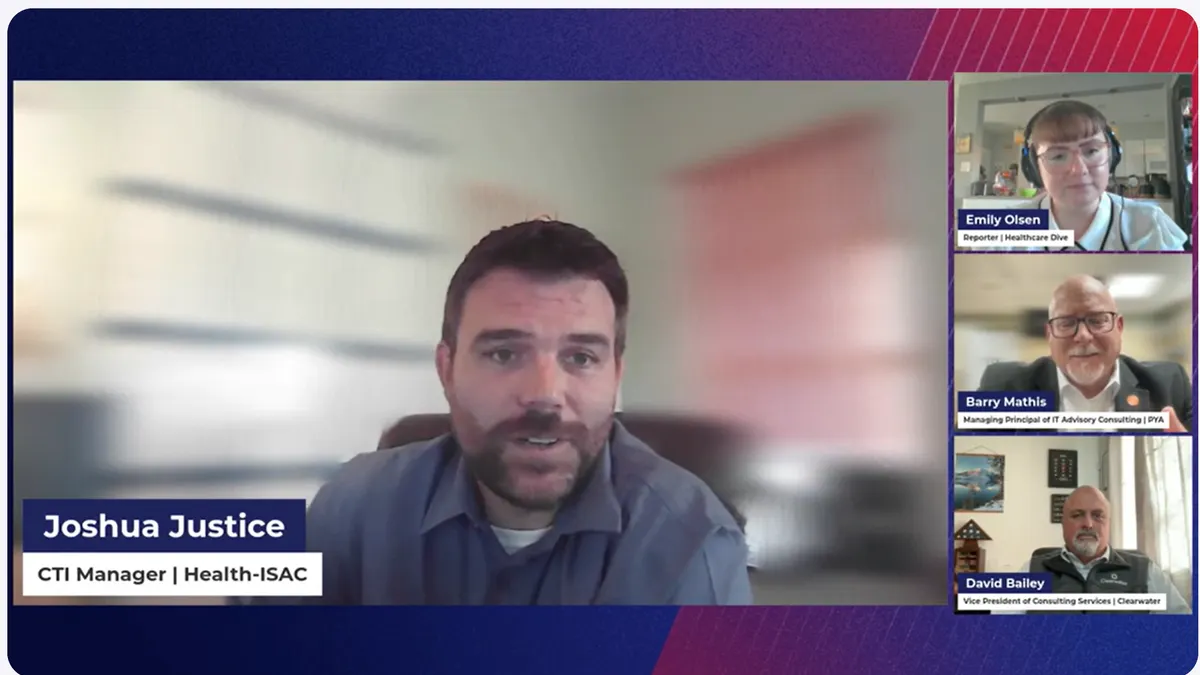Just over a year ago, Indianapolis-based Marathon Health and Denver-based Everside Health merged to form a massive value-based primary care network, serving more than three million patients across 41 states.
The provider partners with employers or unions to offer members primary care, mental health and some telehealth services.
Last year, CEO Jeff Wells said the Marathon-Everside merger would allow Marathon to expand its footprint to offer value-based care to more patients. At the time, Wells projected cost savings for employer-sponsored health plans and unions of about 25%. Now, the executive says total costs of care is about 25% to 30% cheaper for Marathon Health patients compared to the cost of “normal healthcare delivery.”
Wells has been busy to reach this goal. Marathon has expanded its presence significantly in the last year, growing its footprint from 680 health centers to more than 750, and worked to transition its health centers onto a single technology platform called Ignite. The provider now controls roughly 25% of the advanced primary care market, according to Wells.
Here’s how Marathon navigated its first year, and what Wells sees as the major priorities to come.
This interview has been edited for length and clarity.
HEALTHCARE DIVE: Marathon has added nearly 100 health centers since the merger. How did you pick where to expand?
JEFF WELLS: We’ve tried to focus on coming at [the increased demand] in two different ways. One is geography — and this merger really helped us solidify a deep presence in a number of communities across the country. We’re a really entrenched provider in Indiana, Ohio, the Carolinas, Florida, Colorado and New Jersey, as a few examples.
And then secondly, it’s really thinking about it from more of an industry perspective. And so about over a third of our clients are public sector — so states, large cities and counties, school systems. Especially in light of constrained budgets, they have a real focus on managing benefit cost while taking care of your people, we’re doubling down on our ability to support public sector employers.
What does cutting costs look like for healthcare delivery? Most providers say the inputs are fairly fixed. Where do you see opportunities to meet demand for quality care a bit more cheaply?
I think one of the great tragedies in U.S. healthcare is, if you look at what we spend to provide healthcare to Americans compared to other developed countries, it’s about 2x on a per capita basis. And so what we’ve essentially seen is that there’s massive market inefficiency.
A simple example of that would be depending on the provider that you go see, [price] could vary by 500% and most people just don’t know that. And then arguably 30% of healthcare utilization is not necessary. Unfortunately, we have a system where there could be the wrong economic incentives, and so providers end up being too quick to order tests or to make referrals for specialty kind of interventions.
And then my final point would be, there is an opportunity with the right type of primary care model to help patients improve their lifestyle and to improve how they’re managing chronic conditions, like diabetes or depression, to get those under better control. Then you can actually forego future care.
One of the big projects you did in this first year was merging Marathon and Everside onto one technology platform. What advice would you give to other systems looking to do the same?
I think probably the most important thing is getting the individuals doing the work — so in our case, the clinicians, the medical assistants, our physicians or our nurse practitioners — even more engaged even earlier in the process, to work with the technical or operational teams to inform your plan, your timing and how you go forward.
And while we did we did that, I think you always find that when things don’t go ideally, you wish you would have done a little more of that. How do you get those that are really on the front line — they’re using the tools, interacting with patients, sort of doing the work — in the mix? They have the best understanding of what needs to happen, and if certain things don’t happen, what the implications would be.
Speaking of front line workers. A lot of clinicians report feeling burnout from how much they use technology, including a lot of “pajama time” or working after hours on patient notes or billing. How is Marathon thinking about that problem?
From my seat, the first and most important thing that I focus on is thinking about the people in the organization. The front-line clinical teammates at Marathon Health are the product.
We spend a lot of time thinking about and trying to address burnout. We do quarterly pulse surveys of our teams. We try to have really active and open dialogue.
One of the huge advantages that we have at Marathon Health compared to providers working in more traditional fee-for-service health systems is the economic model is different. We are in a value-based reimbursement model, so we get paid to prevent illness and our providers therefore are not working in a volume-based environment.
How much telehealth is Marathon doing currently, and is that a business segment that’s growing?
The core of what we’re providing is a physical, in-person care delivery model. At the same time, we realized you need to provide lots of different on-ramps to support patient care.
We’re still seeing about 70% of primary care being done in person. Patients value that relationship and certain types of care really need to be done with a physical exam and done in person. But compared to pre-pandemic, it’s probably a 300% increase in the amount of remote or virtual care that’s being delivered.
What do you see as the biggest challenge facing primary care as an industry in 2025?
When I look at the industry writ large and the broad definition of primary care, the field is dying. You have a workforce that, in the current reimbursement environment, is set up for failure. There’s a focus on volume, where a primary care provider is being asked to see 20, 30, 40 people a day. There’s an enormous administrative burden that I don’t see being fixed absent shifting to a true advanced primary care model where you move from fee-for-service to value-oriented payment.
We see organizations like Marathon Health being the answer to this problem and being a magnet for fantastic clinical talent that wants to work in a model that goes back to something simple. You want access when you need it, and then I want to build a trusted relationship with a provider that knows me and who all of the incentives are designed around preventing illness.






















